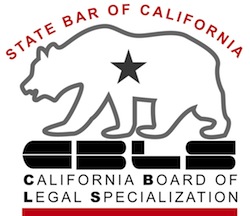Saving a house from foreclosure is the single reason most people file bankruptcy.
Bankruptcy stops foreclosure- that’s a given.
But then what?
How can bankruptcy save the house from foreclosure, rather than just putting off the inevitable loss?
After all, the mortgage lender has a lien on the house, and liens aren’t discharged in bankruptcy.
So, how does bankruptcy help? Meet Chapter 13 of the Bankruptcy Code.
Chapter 13 bankruptcy is the chapter of choice if your goal is to keep living in the house. Or it works to enable a sale to realize equity or to avoid the credit hit of a foreclosure.
Chapter 13 imposes a payment plan on lender
Chapter 13 is built to allow the homeowner to cure defaults on long term debts like mortgages.
Gone is the ability of the lender to refuse to take catch-up payments or to insist on cure in a single payment.
This is federal law, and the homeowner is at the helm of this ship.
The homeowner in Chapter 13 proposes a plan for payments to the Chapter 13 trustee. The court approves the plan. The trustee pays creditors according to the plan. The usual distribution scheme pays secured claims, like home loans, first.
So, your plan can provide that you pay the trustee a monthly payment that catches up on that default. Chapter 13 plans last a minimum of three years and a maximum of five years.
Your plan will need to provide that you make the on-going payments on the mortgage as well. Each district has its own protocol as to whether you write the check to the mortgage lender for ongoing payments or whether you pay the trustee, who pays the lender.
Once your plan is confirmed, the lender is required to accept the payments. Absent some post filing breach on your part, the lender is unlikely to have any way to push back against the payment plan.
Trustee challenges to confirmation
Because the confirmed Chapter 13 plan has such power, both the Chapter 13 trustee and the mortgage lender have opportunity and incentive to object to your plan.
The trustee’s objection is often focused on feasibility. Does your projected budget show that you can pay enough into the plan to do what’s required?
Remember that the amount necessary to fund the plan is not just the amount of the mortgage arrears.
The Chapter 13 trustee gets a commission on the money she handles in the case. So, to get $1000 to the mortgage lender, you have to pay the trustee $1100, where the trustee’s commission is the 10% maximum.
Also, if you owe priority taxes, the Bankruptcy Code requires that those taxes be paid in full over the life of the plan. Likewise, any delinquent family support claims must be paid in full.
So, the total payments to creditors through the plan may need to cover other creditors as well. It depends on the means test or the net value of your assets.
The trustee will look at the total amount your plan provides over the life of the plan and compare it to your projected income on schedules I and J. Does it look like you can pay your current living expenses and the amount required by the plan? If you propose to increase plan payments in future months, is there reason to think you will have the money to do that?
If not, your plan may not be feasible. If it’s not feasible, it doesn’t get confirmed.
Mortgage creditor fights back
The mortgage creditor has standing to oppose confirmation as well.
Even if the secured creditor doesn’t challenge feasibility or good faith, both required for confirmation, the secured creditor has another, less direct weapon.
When you file bankruptcy, the secured creditor gets to claim not only the missed mortgage payments, but any money the lender has advanced for taxes or insurance. And, they may have an escrow shortage projected for the current year’s payments. That’s not to mention foreclosure costs and other fees.
So the lender’s claim may be larger than you expected.
The beauty of Chapter 13 is that the lender has to make full disclosure of those claims and you get to challenge whether the accounting is correct. You can also challenge whether the fees sought are really allowed by the mortgage.
Mortgage check up at plan’s end
So let’s assume that you get your plan confirmed and faithfully make all the payments required.
New bankruptcy rules work to make sure that you emerge from Chapter 13 fully current on your home loan.
Bankruptcy Rule 3002.1 requires a lender secured by a principal residence to give notice to the court, the trustee and the homeowner of payment changes that occur during the case.
Also, if the required escrow payment changes, or any fees get added to the loan during the case, the lender has to file a notice describing the change.
And the homeowner can challenge changes or additions to the debt. If it doesn’t get sorted out, a judge will look at the situation and make a ruling.
After the last payment to the plan, there’s a mortgage check up. If the lender contends you aren’t fully current on the loan, it has to file a detailed accounting showing how much it claims is unpaid. That accounting is subject to challenge.
Debtor’s rights after 13 is over
One of the few good things included in the 2005 amendments to the Bankruptcy Code, in my opinion, are the provisions that make it a violation of the debtor’s discharge to improperly credit payments made pursuant to a Chapter 13 plan.
All too often, the lender or mortgage servicer either has two sets of books on a loan, or the entries it has made for payments during the plan get altered after the Chapter 13 is over.
Bingo, the lender now claims the borrower is in default, and foreclosure looms.
The bankruptcy court is now a forum for challenging those contentions and getting redress, including the borrower’s attorneys fees to make it happen.
Chapter 13 saves houses
The power of Chapter 13 goes far beyond the automatic stay in giving homeowners a chance to save their homes from foreclosure.
Not only does it get the homeowner some law to counter balance the endless rights of the lender in the loan documents, it gives the homeowner a referee in the form of a bankruptcy judge who can resolve disputes.
Bankruptcy judges over the last decade have seen much of the mortgage meltdown up close. They’ve also seen the deterioration of mortgage servicing. They are familiar with the problems and less and less tolerant of lender abuses.
Chapter 13 can be a struggling homeowner’s lucky number to save their house from foreclosure.
More
California has grant money to help
Recover the house AFTER a California foreclosure
Our best advice on keeping your house
Image copyright Fotolia and Jakub Krechowicz










